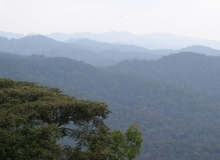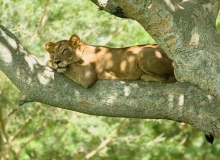
Speak to a specialist
0208 777 4873
0208 777 4873
Places to see: Africa

EGYPTIAN ATTRACTIONS
Aswan
Among the major attractions of Aswan are of course the Aswan Dams. There are two. The first was finished in 1902, and was the largest in the world in its days. The new one was completed in 1971, and was constructed as a result of the increasing Egyptian population.
Granite Quarries
At the southern end of Aswan is one of the granite quarries that supplied the stone for temples and colossi in ancient times. In one section of the quarry lies a gigantic unfinished obelisk that had been hewn from the bedrock but later abandoned after a flaw was detected. Had this obelisk been finished it would have weighed 1168 tons and stood at a height of nearly 42 metres.
Felucca Ride to Botanical Gardens
The feluccas and Aswan are inseparable. The Nile's timeless beauty is best experienced on a lateen-sailed felucca. These indigenous boats offer an unforgettable and uniquely Egyptian event. Take a short ride on a felucca to the Botanical Gardens on Kitchner's Island and spend an afternoon on the island admiring exotic flora from as far as India and Malaysia.
Kom Ombo
Known for its unusual double temple, one half of which is dedicated to the falcon-headed god, Haruris and the other half to the crocodile god, Sobek.
Temple of Horus at Edfu
Here you find the sandstone Temple of Horus, the largest and best-preserved temple in Egypt. Built by the Ptolemaic Pharaohs, its bas-reliefs give a vivid picture of life in ancient Egypt.
Luxor
A magnificent ancient township built on the site of the even more ancient city of Thebes, dating back 4,000 years. The Luxor Temple is a remarkably delicate work of architecture, originally built by Pharaoh Amenophis, and added to by various rulers over the aeons, including Alexander the Great. The Luxor Museum has a wonderful collection of ancient statuary, as well as relics from the ancient city of Thebes.
Temple of Madinat Habu
The entire Temple of Ramesses III, palace and town is enclosed within a defensive wall. Entry is through the Highgate, or Migdol, which, in appearance resembles an Asiatic fort. Just inside the Highgate, to the south, are the chapels of Amenirdis I, Shepenwepet II and Nitoket, wives of the god Amun. To the north side is the chapel of Amun. These chapels were a later addition dating to the 18th Dynasties, by Hatshepsut and Tutmoses II. Later the Ptolemaic kings of the XXV Dynasty made renovations.
Temple of Hathor in Dendara
The Temple of Hathor, goddess of Joy, is a Greco-Roman creation built between 125 BC and 60 AD. It emulates the Pharaonic pattern of hypostyle halls and vestibule preceding a darkened sanctuary. In this temple Hathor takes the human form rather than her bovine aspect.
Valley of the Queens
The Valley of the Queens is a misnomer for it also houses the tombs of high officials and royal children along with the various queens and concubines. The valley contains 80 tombs, most of which are uninscribed and simple in plan although the murals in these can rival those in the Valley of the Kings. The reopening of the tomb of Nefertari in 1995 has given the Valley of the Queens an extra fillip.

LAKE MBURO NATIONAL PARK
Area - 260 square kilometers
Approx. distance from Kampala: 230 km estimated Transit Time: 3-4 Hrs
It lies along Mbarara Road within easy access of Kampala. It is ideal for a transit stop to/from the gorilla sanctuaries or Queen Elizabeth National Park. It is an attractive park of rolling hills and open grassy valleys, interspersed with thickets, woodlands and rich wetlands. Find here herds of zebra, Cape buffalo and eland. Oribi and Topi are easily approached. Along with a game drive, many visitors enjoy a boat trip on Lake Mburo. Birdwatchers, will enjoy the more than 250 species of birds found in Lake Mburo including Papyrus Gonolek, Brown faced Lapwing. Carruther's Cisticola, the extraordinary White winged Warbler and Bare-Faced-Go- Away bird.

BWINDI IMPENETRABLE NATIONAL PARK
Area - 330 square kilometers
Approx. distance from Kampala: 550 Km estimated transit Time: 8-10 Hrs
It is one of the largest natural forests in East Africa, supporting a large number of plants and animals not found elsewhere. About half the world's population of 600 mountain gorillas reside in Bwindi. The vegetation, as the park's name implies, is composed of tropical rainforest with dense undergrowth. This rugged terrain makes hiking in search of gorilla strenuous work. Visitors who trek should be prepared for up to 8 hours of hiking. Good physical condition is required. A maximum of only 6 permits per day are available for advance booking, so confirmation 4-12 months in advance is required to avoid disappointment. Along with the gorillas, there are nine other species of primates including chimpanzee, blue monkey, red tail monkey, L'hoest's monkey, black and white Colobus, Potto, Demidoff's and needle-clawed Galago. Three hundred forty-seven species of birds have been recorded in Bwindi; seven species are listed as endangered. Species of particular interest include the Kivu ground thrush, white-bellied robin chat, red-throated Alethe, collared Apallis, short-tailed warbler, yellow-eyed black flycatcher, Rwenzori Batis, blue-headed Sunbird, strange Weaver and the Shelley's crimson wing. Over 200 species of butterflies have also been recorded here

QUEEN ELIZABETH NATIONAL PARK
Area - 2000 Square kilometers
Approx distance from Kampala: 440 km estimated transit time: 6 hrs
As one of the outstanding treasures of Uganda, QENP has recently been designated a Biosphere Reserve for Humanity under UNESCO. It is the home of the famous tree-climbing lions, the Uganda kob and other antelope as well as elephant, buffalo, hippos, baboons and chimpanzee. Over 500 species of birds have been recorded here making it a prime target for birdwatchers. Species recorded include the shoebill stork, black bee-eater, 11 types of kingfishers and a variety of raptors including several falcons and eagles. In the crater lakes, spectacular flocks of flamingos gather, creating the image of a moving pink carpet. The launch trip along the Kazinga Channel between Lakes George and Edward is a memorable way to view the abundant game in Queen Elizabeth. North of the main gate is the crater area, one of the most scenic parts of the park. To the East, in Kyambura Gorge, visitors can climb through tropical forest and catch a glimpse of a variety of primates, including chimpanzee. In the more isolated Ishasha sector of the park, search the woodlands for the tree-climbing lions perching on the boughs of ancient fig trees. To the southeast, travelers can explore newly opened trails in Maramagambo forest.
Subscribe here to our monthly newsletters


